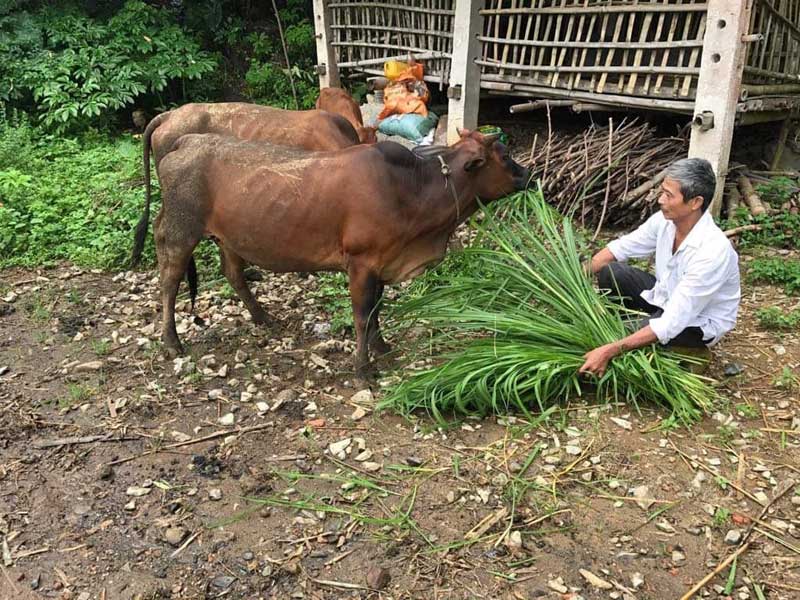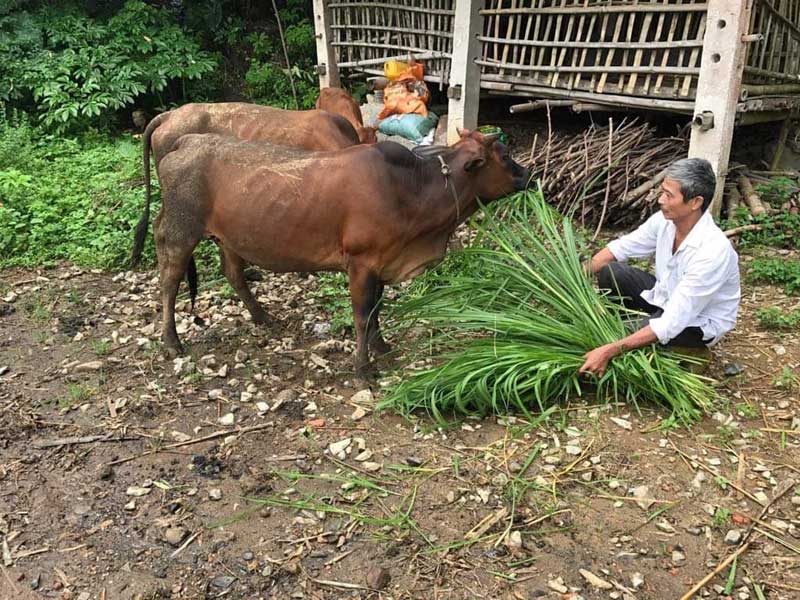
HBO – Over the past time, Luong Son district in the northern mountainous province of Hoa Binh has stepped up agricultural restructuring in combination with new rural area building.
 Farmers in Quyen Chua hamlet, Cao Duong commune, Luong Son district, improve
their income thanks breeding cows for beef.
Farmers in Quyen Chua hamlet, Cao Duong commune, Luong Son district, improve
their income thanks breeding cows for beef.The
project on agricultural restructuring towards higher added values and
sustainable development in Luong Son district by 2020 aims to develop local
agriculture towards mass production with higher productivity, quality and
competitiveness, contributing to improving local people’s living standards,
reducing poverty rate and protecting the environment.
The district’s gross regional domestic product (GRDP) is expected to grow 2.02
percent annually while annual average income per capital in rural areas is set
at over 50 million VND. More than half of communes in the districts are hoped
to fulfil 19 criteria of a new rural area by 2020.
Luong Son has instructed the agricultural and rural area sector to join hand
with relevant ministries and agencies in agricultural restructuring in line
with the district’s socio-economic development strategy and planning, and in
combination with sustainable new rural area building.
The agricultural restructuring must be carried out in accordance with the
market mechanism, while helping ensure basic targets of social welfare for
farmers and consumers, and improve production quality and efficiency.
Mr Nguyen Anh Duc, head of the district’s bureau of agriculture and rural
development, said agricultural restructuring is an important, long-term task
that is closely linked with the national target programme on new rural area
building.
To gain better results, the district has paid attention to developing
collective economic models, forming production and consumption chains, stepping
up scientific-technological application and mechanising production.
As a result, it now has ten new rural communes. Thanks to changed plant
structure and production chains, the district’s income per capita has reached
31 million VND each year and the poverty rate dropped to 1.91 percent.
The emulation movement "Hoa Binh joining hands to build new-style rural areas” has been widely spreading, becoming a driving force that motivates the localities to renew rural landscapes and improve the material and spiritual lives of the residents. In this movement, the people play a central role-both as the main implementers and direct beneficiaries of its outcomes.
In response to the global digital revolution, Hoa Binh Newspaper is transforming itself into a modern and multi-platform media hub, blending cutting-edge technology with a restructured newsroom and a new generation of tech-savvy journalists.
Hoa Binh province’s Association of the Elderly recently held a conference to review the project on expanding the inter-generation self-help club model until 2025.
In a move to implement Resolution No. 57-NQ/TW, issued on December 22, 2024 by the Politburo, which targets breakthroughs in science-technology development, innovation, and digital transformation, the Hoa Binh provincial Department of Health has issued a plan to roll out the "Digital Literacy for All” campaign within the local health sector.
An Nghia Commune (Lạc Sơn District) is one of the communes that achieved the tha standard of the national new rural area in 2018. Entering a new development phase, the commune is now trying to meet the criteria for the advanced new rural development. With the strong political will and the public consensus, the commune is gradually overcoming the challenges to reach this goal, aiming for the sustainable development.



 Farmers in Quyen Chua hamlet, Cao Duong commune, Luong Son district, improve
their income thanks breeding cows for beef.
Farmers in Quyen Chua hamlet, Cao Duong commune, Luong Son district, improve
their income thanks breeding cows for beef.